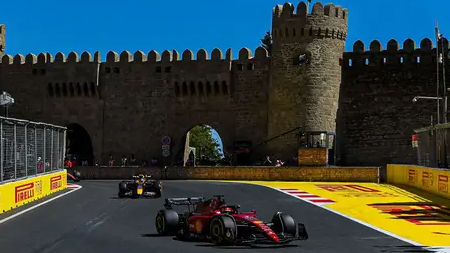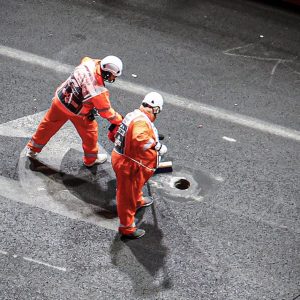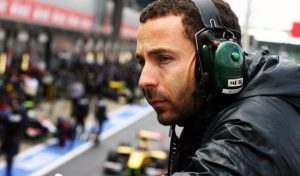The FIA has announced fresh regulations in an attempt to tackle ‘porpoising’, amid concerns over drivers’ safety.
Rumblings had been going on over the last few races about the safety issues arising from the introduction of F1’s new design regulations. These regulations were meant to make racing more exciting and allow cars to follow each other a lot closer by dealing with dirty air more efficiently. However, an undesirable side-effect has been that a lot of cars have experienced bouncing, which has a lot to do with how these new cars are creating their downforce.
Also read: F1: Paddock tug-of-war begins as floundering teams cry foul over safety
These rumblings became a cacophony at the bumpy Baku Street Circuit last weekend- where a lot of drivers complained of pain and soreness, most notably 7-time world champion Lewis Hamilton– who struggled to get out of this cockpit at the end of the race.
The FIA has taken note and acted promptly- issuing a technical directive ahead of this weekend’s Canadian Grand Prix at Montréal that will force teams whose cars are suffering from bouncing over a certain limit to alter the setup- to limit the frequency of ‘vertical oscillations’, even at the cost of performance. This, they say, is solely in the interest of driver safety. It is currently not known whether these directives shall be enforced in the Canadian Grand Prix.
Also read: Formula 1: Drivers support penalties for triggering flags in qualifying
An FIA statement read: “Following the eighth round of this year’s FIA Formula One World Championship, during which the phenomenon of aerodynamic oscillations (“porpoising”) of the new generation of Formula 1 cars, and the effect of this during and after the race on the physical condition of the drivers was once again visible, the FIA, as the governing body of the sport, has decided that, in the interests of the safety, it is necessary to intervene to require that the teams make the necessary adjustments to reduce or to eliminate this phenomenon.”
The FIA also added that it intends to conduct an investigation as to how this porpoising problem can be dealt with in the ‘medium term’. This investigation shall be done in constant consultation with the teams.
For Mercedes, who have failed to keep up with Red Bull and Ferrari, this new directive is not going to help them to bridge the gap with the front-runners, but might only make it larger, in the short term at least. This is because the FIA directive has effectively blocked Mercedes and other teams from racing with setups that might compromise driver safety- the teams will have to raise the height of the cars to stop the bouncing, which will reduce downforce and thus slow the cars down.
Also read: Formula One extends contract with Australian Grand Prix till 2035
In spite of this, Mercedes’ George Russell has praised the FIA for the swift action. Speaking to SkySports, he said, “It doesn’t matter what boat you’re in, you’re either porpoising and you’re hitting the ground, or you have no porpoising so you’re running the car really close to the ground and you’re bottoming, so either way you look at it, it’s not great.
“I think it’s promising to see that they’ve taken action on this straight away and it’s not taken them weeks and months and political decisions to change something like this. When it comes to safety, things need to be resolved as soon as possible, so I’m not surprised to see it come in so quickly but I think it’s good for everyone.”







